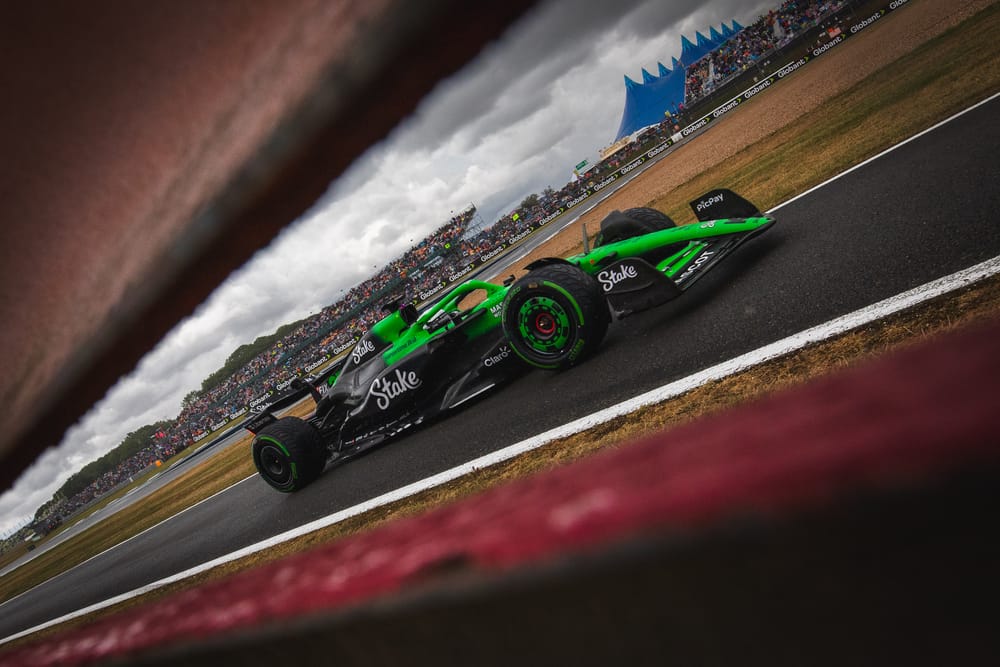Nico Hulkenberg's shock podium finish in Formula 1's British Grand Prix shone a light on a fascinating change of the guard in the midfield as Sauber surges forward.
A team that had been struggling to get in the points earlier in the campaign - and didn't score at all between the season-opener and round nine in Spain - has outscored even Red Bull recently.
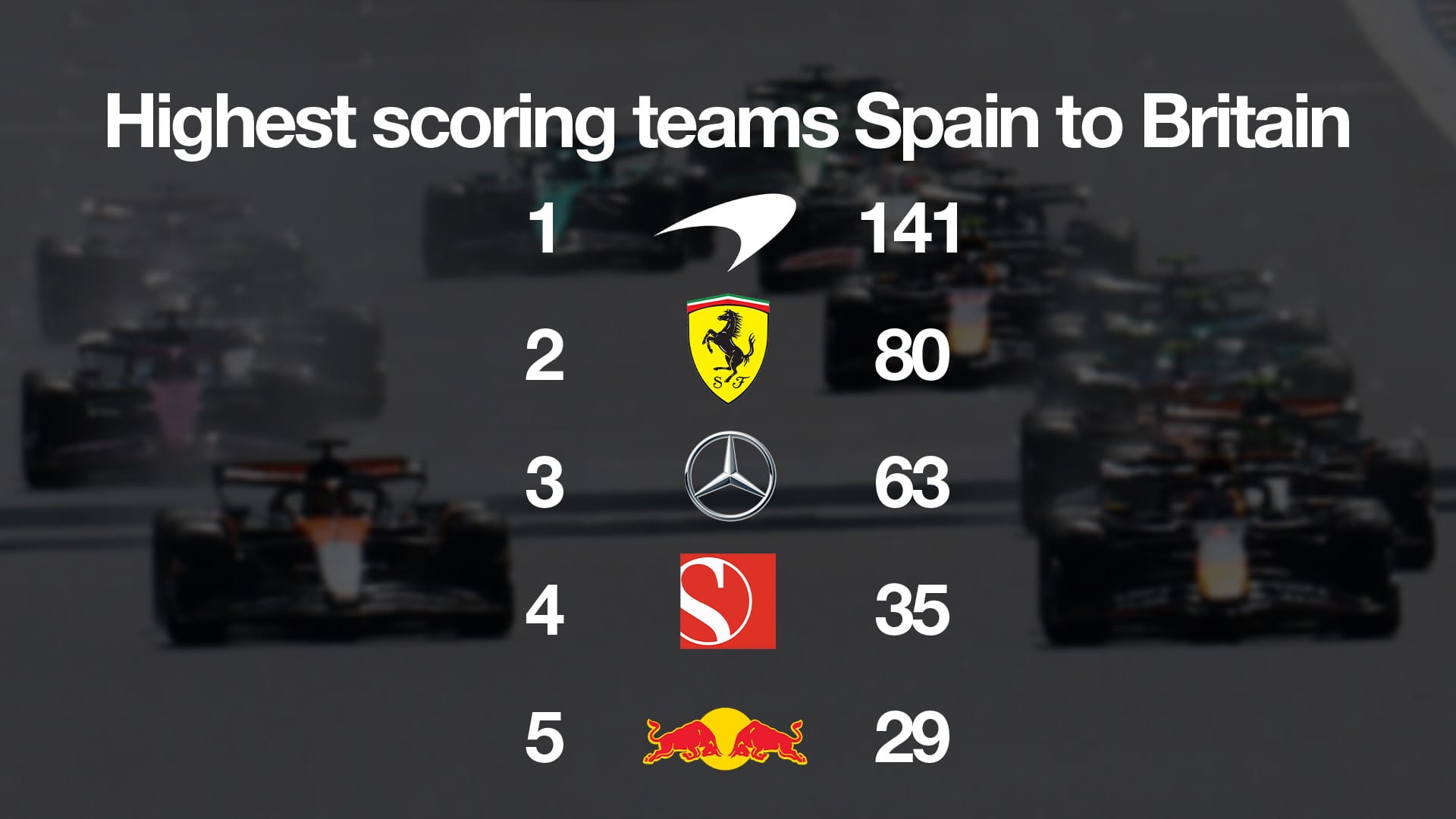
Since the Spanish GP at the end of May, Sauber is the fourth highest scoring squad – with Hulkenberg the sixth highest scoring driver in that same period.
He has brought home more points in the last four races than Max Verstappen, Kimi Antonelli and Fernando Alonso.
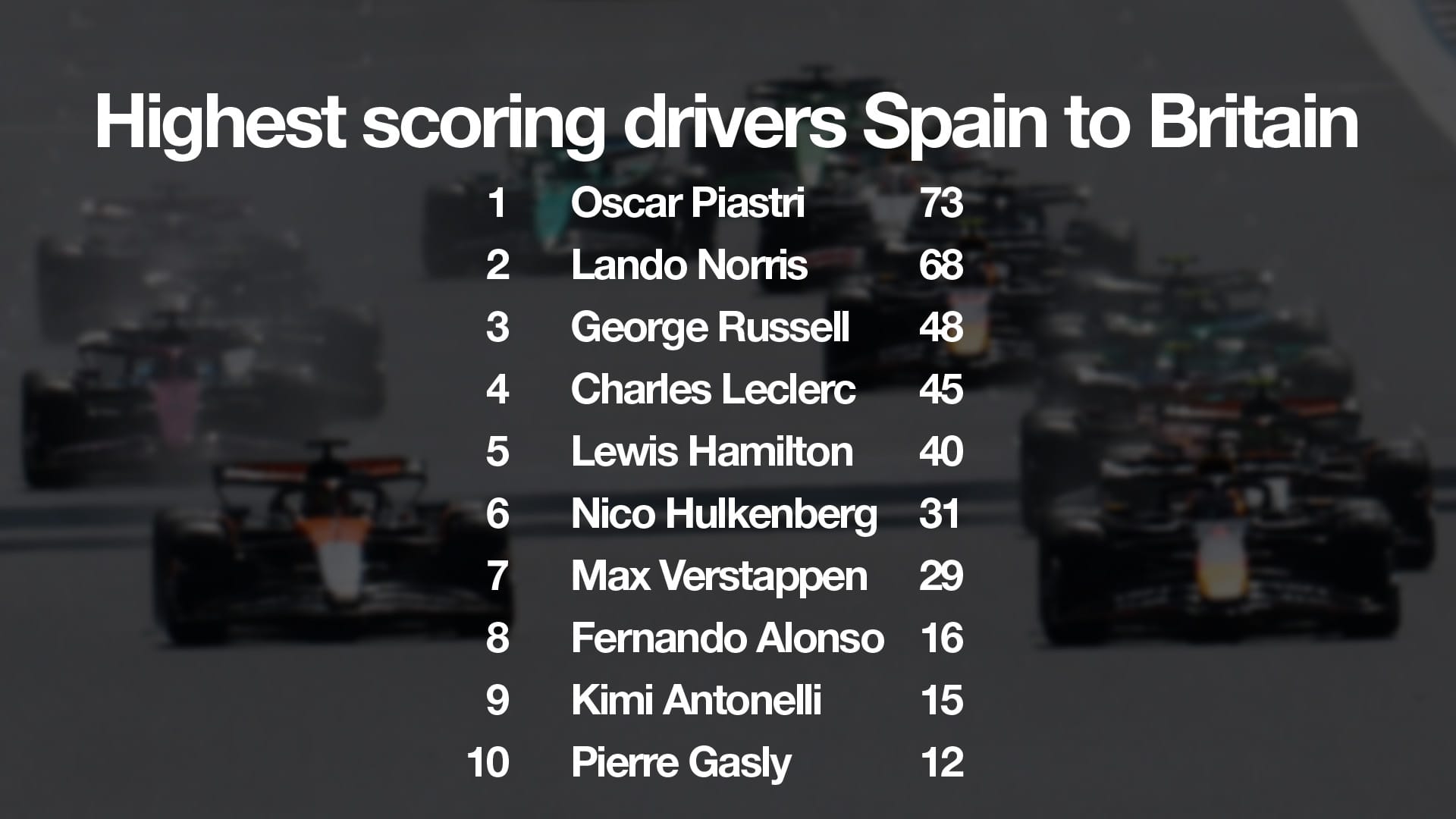
Sauber's change in form since Barcelona is quite a straightforward one to explain, as it coincides with the team having introduced a three-pronged upgrade push over the recent spell.
In Spain, there was an all-new floor, front wing and engine cover.
In Austria, it evolved the floor edge and diffuser, plus added a new high-downforce rear wing.
And then at the British GP last weekend, it updated the front of the floor plus brought along a Silverstone-specific front wing flap designed to complement a lower downforce rear wing arrangement.
Together, these have all helped Sauber produce a car that in the closing stages of the British GP showed that it was every bit a match for Ferrari in pace terms as Lewis Hamilton failed to hunt Hulkenberg down.
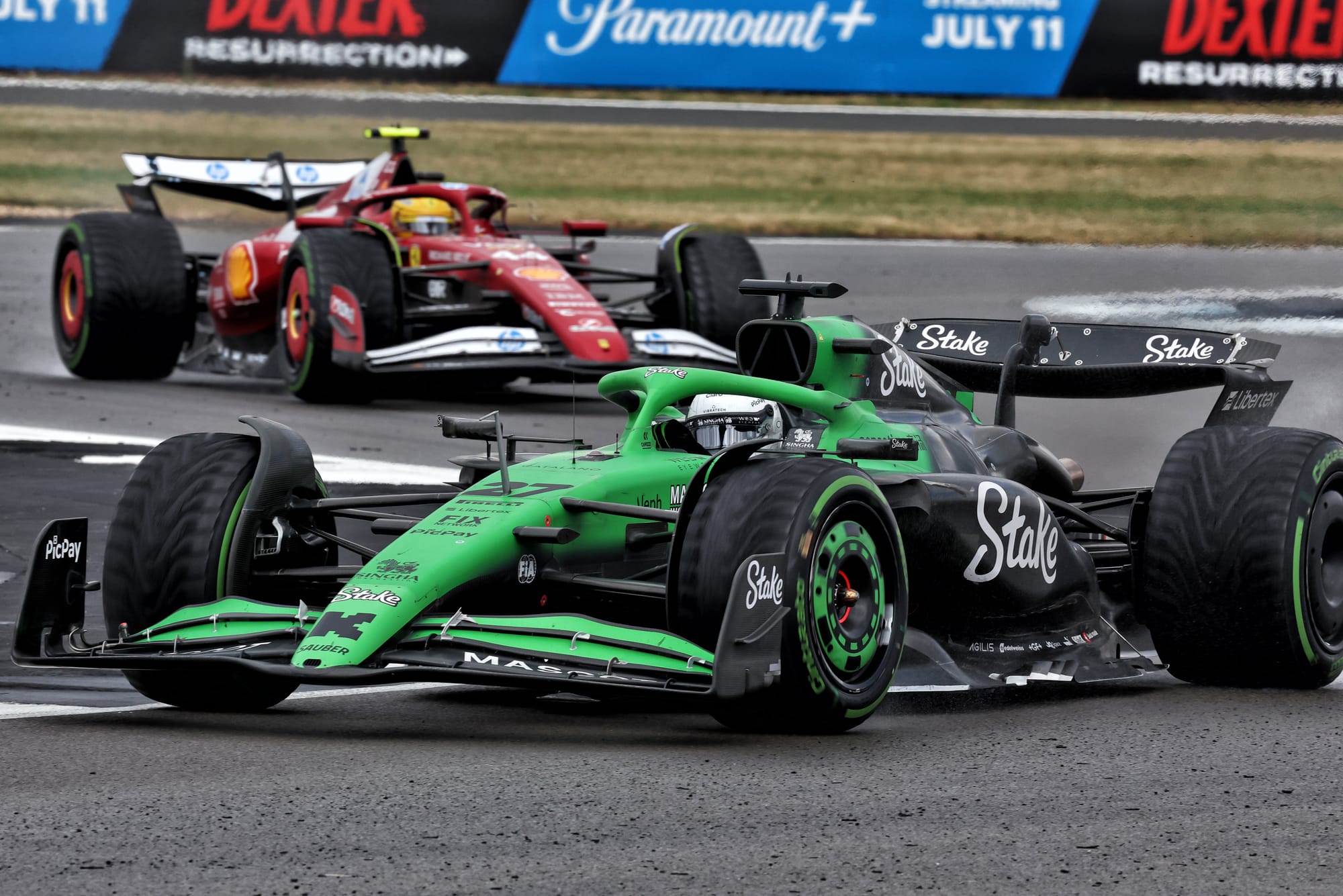
But what is most remarkable about Sauber's most recent upgrade attack is that it never expected to have the latest improvements at all.
The Spanish GP development targeted bringing more driveability to the car, but was intended to be pretty much a one-off.
However, the changes also opened up an all-new avenue of development in the windtunnel that made finding further improvements so easy that it was a no-brainer to get them on the car.
Sauber sporting director Inaki Rueda explained: "We didn't expect this.
"We expected to get a floor for Barcelona. We didn't expect these successful evolutions. This new avenue of development has opened these new changes."
Why the upgrades have made such a difference
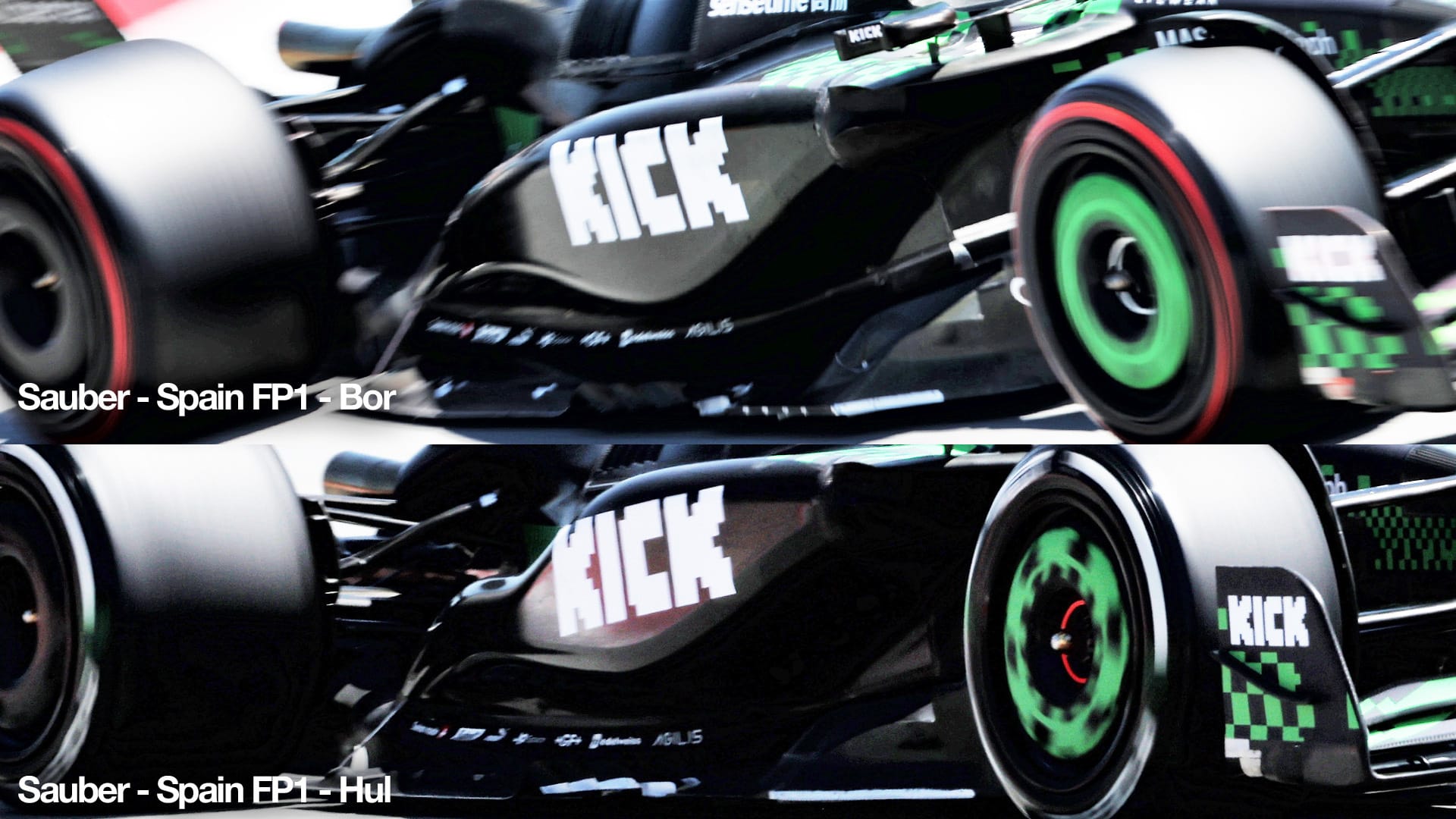
The transformation in Sauber's form is not down to it suddenly unlocking a tonne more downforce with the upgrades that has made its car quicker.
Instead, what the changes have done is make the C45 much more driveable – especially when it comes to unpredictable airflow conditions such as dirty air from other cars or gusts of wind.
Earlier in the campaign, both Hulkenberg and Gabriel Bortoleto suffered hugely when running behind other cars.
Hulkenberg had described the opening lap of the race and safety car restarts as being a case of "survival", while Bortoleto said he could physically feel the problems when driving.
"It has been the case since race one," he explained back in Bahrain in April. "Me and Nico, we have been suffering a lot in lap ones, restarts and stuff. This is clearly dirty air.
"I cannot even keep my head straight in the straight line when I'm close to the car ahead, because I keep going left and right with the helmet. It's just so bad."
The Spanish GP upgrade in particular - which comprised a new floor, engine/'Coke bottle' area cover and front wing - was aimed solely at producing downforce more consistently rather than in a very narrow window.
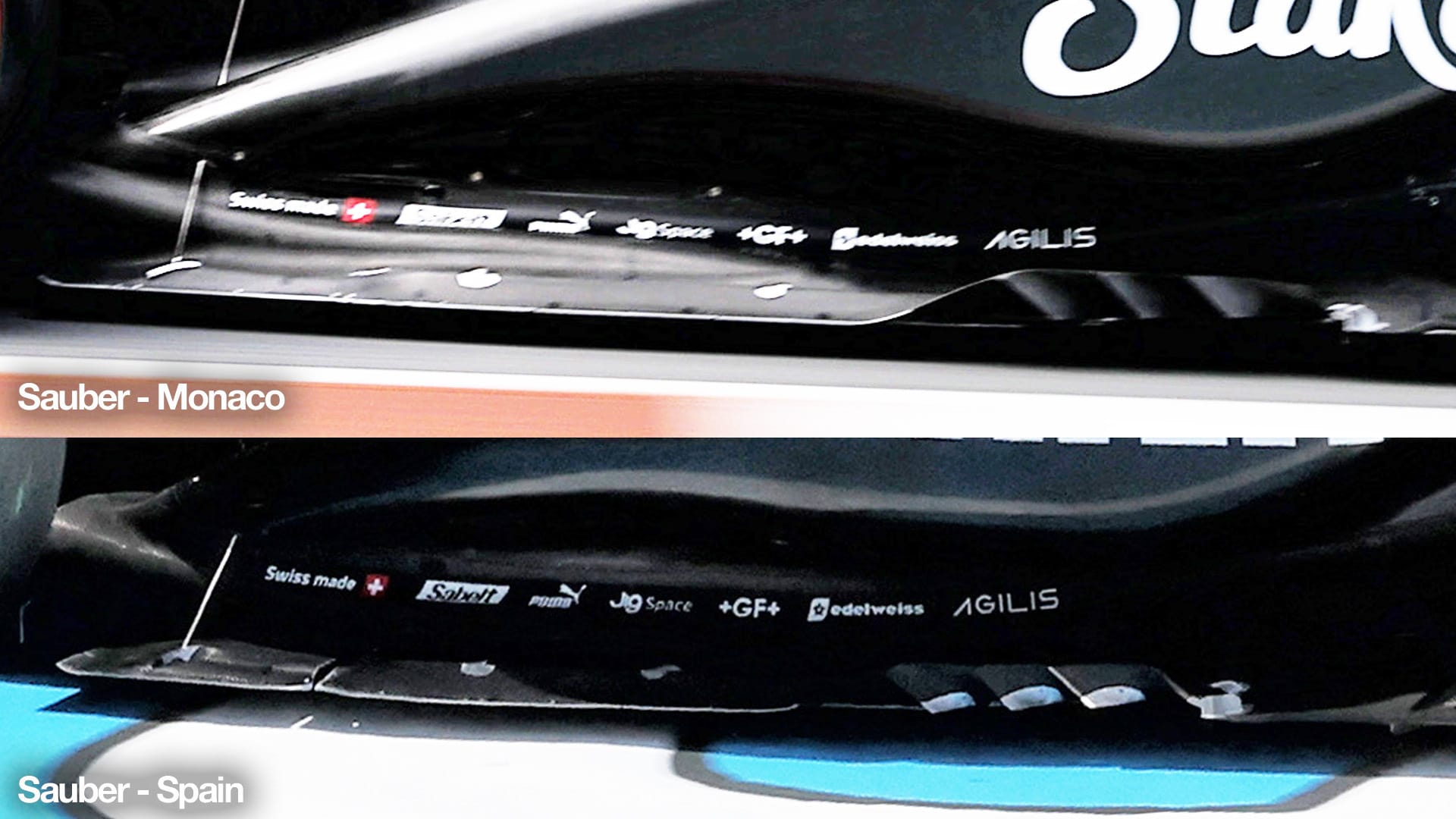
As Rueda said at the time: "It's very common that as you put downforce on, you get a more peaky profile. So you usually get to a point that you get a car that is decent but is undriveable in tricky conditions.
"It is a point that was highlighted at the start of the season, on our first test with this car. And this is hopefully the fix for that."
The difference to Sauber was obvious from the very first run when, with Hulkenberg using the new package in FP1 at Barcelona, he was 0.367 seconds quicker running a similar programme.
As Gary Anderson explained at the time, one of the ways that Sauber had tweaked the car to make it more driveable was to help deliver more consistent airflow from the sidepods to the floor.
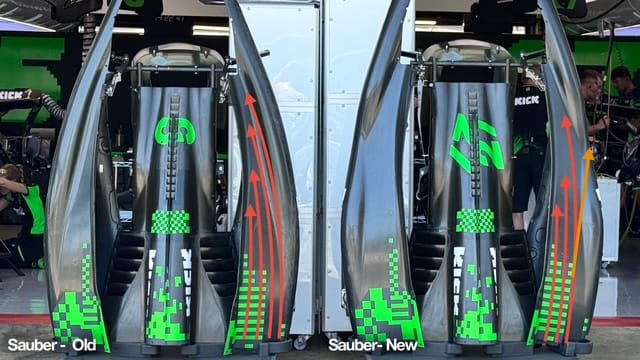
Previously, Sauber had a sidepod top surface inner gully (highlighted with the red arrows) running from the forward upper surface of the sidepod and leading down into the centreline of the car, to help with the diffuser performance.
For Barcelona it altered the outer 'rolled bathtub' edge and reduced it midway along the sidepod.
This allows some of that upper surface flow to spill over into the Coke bottle area, highlighted with the orange arrow.
This spillage improves the consistency of the flow coming through from the sidepod forward corner undercut, highlighted with the blue arrows.
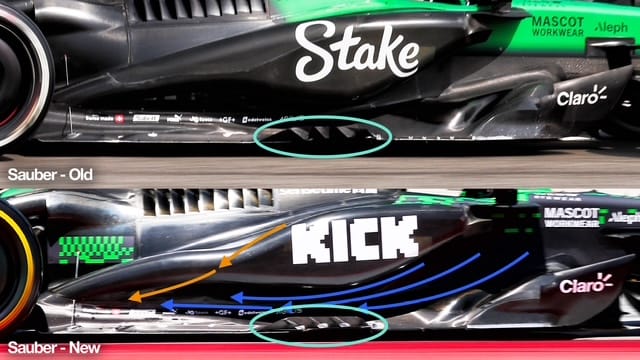
If this airflow that is being pulled through that sidepod front corner undercut is not consistent, then everything can suffer - the front wing performance will suffer, the outer edge of the floor sealing mechanism will suffer and the extraction vanes further forward (highlighted in light blue) will also suffer.
So for a small increase in overall downforce when the car is running in an ideal world it can very easily turn into a major loss of downforce when the car is running in what could be called its normal environment.
Where will its 2025 development stop?
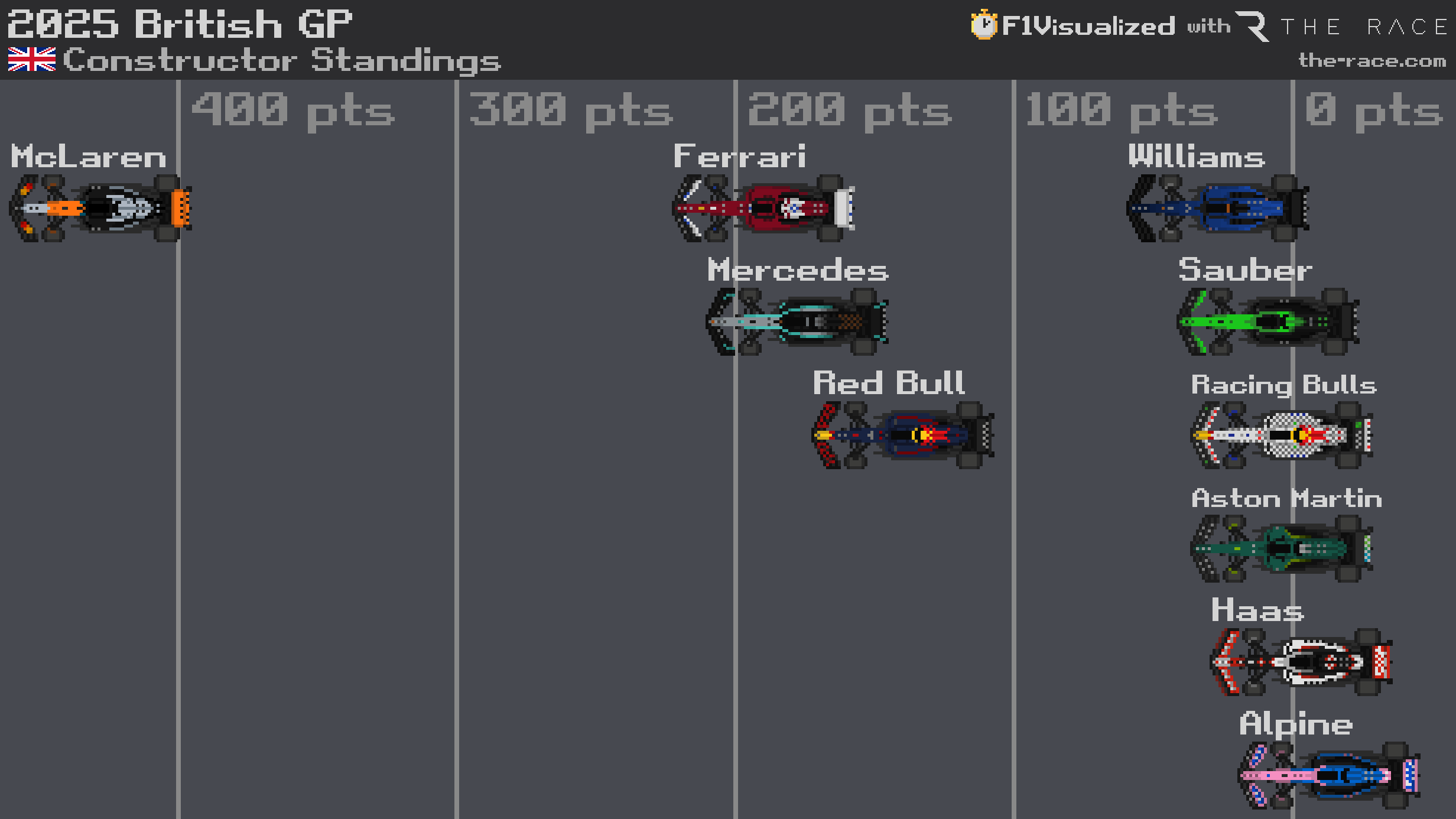
Despite the unexpected gains that Sauber has made with its car, and the fact that it now has a shot at closing down on Williams for fifth in the constructors' championship (which would be its first top-five championship finish since its BMW era in 2008), the squad knows that it cannot throw too much more at its current car.
The new avenue of development that the Barcelona floor concept has opened is one that can clearly deliver great rewards, but it knows that with 2026 on the horizon it needs to be sensible in how much resource it keeps on its current car.
Rueda thinks that what came at Silverstone – which was in effect a third evolution of the Spain floor – may well be the last significant step this year.
"I think we have already developed more than we thought we were going to, because this avenue opened up," he said. "I don't think we will find any more avenues.
"There might be a bit of refinement on the same avenue, but there will not be any other big experimentation to do because, as you know now, we're trading off 2026 development."
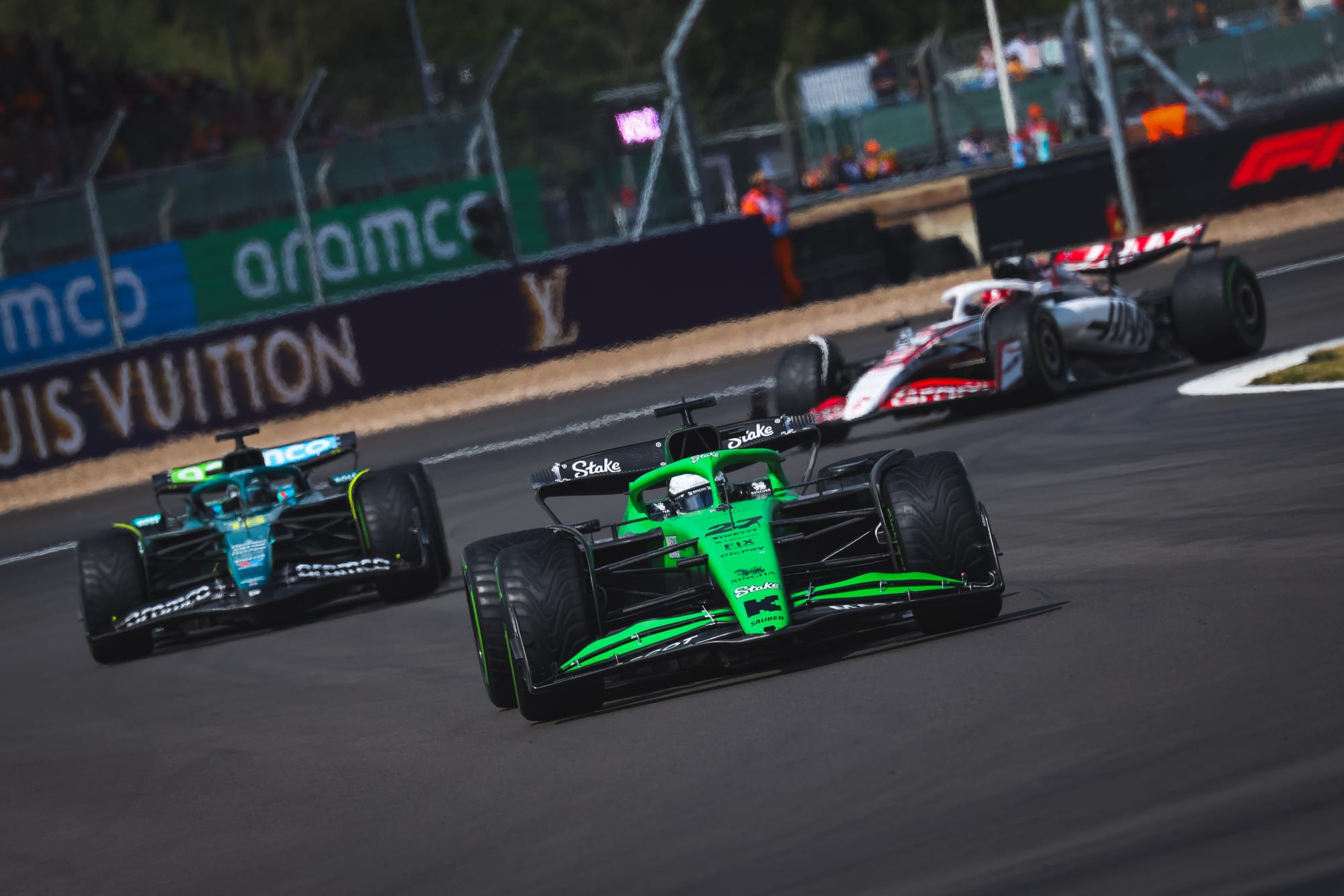
He added: "It's a fine balance, you know. We were going down that route and we did not expect to get an upgrade for this race.
"But the windtunnel came up with this upgrade that was so easy to produce, that they said, 'OK, well, let's maybe develop a bit more this year's car, because we found this'.
"But at the same time, if you keep on developing into a dead end development path, then you're wasting time that should be developing something else."


